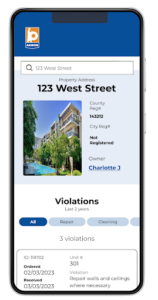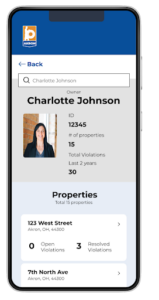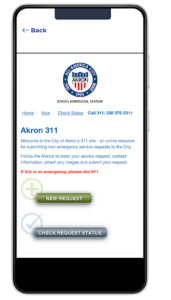How the City of Akron is tackling housing evictions
Think about what your home means to you.
It might be a safe haven full of memories and feelings of comfort, or a place where you can be yourself. Now, imagine suddenly being forced out of your home with less than 30 days to pack everything you own and move somewhere unknown.
Across the United States, housing insecurity is rising, with nearly 2.7 million evictions—court-ordered removals of tenants from the property in which they reside—reported annually. Evictions can be caused by numerous factors, from renters being unable or unwilling to pay their rent to landlords retaliating against tenants who lodge a formal housing complaint against them. Additionally, many tenants face dire living conditions that violate their right to safe and secure housing, including exposure to mold, mice, and toxic chemicals, among others. These circumstances often result in both emotional and physical trauma.
In particular, the City of Akron—with a population of 189,347 residents—files, on average, 300 evictions each month, resulting in an eviction rate of roughly 1.9 percent. Most of those evicted each month identify as low-income, Black, Indigenous, and people of color (BIPOC), with a disability, or elderly.
Trey, a tenant in Akron, described their experience of living in their unit as part of discovery research in The Opportunity Project for Cities (TOPC) 22-week design sprint program:
“When I first moved in, I didn’t know my housing rights or anything. So, for two years I lived with those types of conditions, and mold was in my sewage. My laundry room flooded with sewage and mice and roaches and stuff and a brand new unit that was renovated, and I finally got tired after two years, and I did go through our escrow process. And then I didn’t know if I could or couldn’t move anywhere else.”
To address the issues facing Trey and many other tenants across the city, the City of Akron partnered with United Way of Summit & Medina, Google.org, the Beeck Center for Social Impact + Innovation, and the Centre for Public Impact on the TOPC program and designed a prototype of a digital platform to help tenants find safe and livable housing. They demonstrated the platform to the public on November 2 at the TOPC Demo Day.
The platform helps tenants easily search a property’s history of evictions and complaints by address and search for the property owner. Once implemented, the tool will give step-by-step instructions on filing a complaint and what resources are available to prevent existing tenants from being evicted. Tenants can access culturally relevant and linguistically appropriate resources, including housing rights; file a complaint connected to the City’s 311 system; and connect to legal services.
Throughout the design sprint, the City of Akron and United Way of Summit & Medina conducted user research, ideation, prototyping, and usability testing with tenants and experts in property management. The research showed three key insights:
Tenants face barriers to accessing information to resolve housing issues
Tenants who are predominantly low-income, BIPOC, with a disability, and elderly experience many challenges and poor living conditions in Akron. They struggle to understand their rights and appropriate living standards, report their housing issues to their landlords and the housing compliance agency, and follow up on solutions. They are afraid to report their concerns because they don’t want to be evicted or be sued, among other reasons. Tenants want to know what their potential housing looks like before they commit to renting a unit.
A digital tool from the City helps close this knowledge gap by increasing transparency in data access. Tenants will spend less time searching for information in various sources, improving their ability to make informed decisions and find livable housing for themselves and their families.
 |
 |
There are disparities in the balance of power between tenants and landlords.
Many residents lack the basic knowledge of the Akron housing-eviction process protocol to combat their impending legal issues or avoid a housing crisis. With eviction filings in Akron on the rise, especially post-COVID-19 pandemic, numerous city and state officials have called the impending situation a crisis, resulting in high rates of housing insecurity. During discovery research, one tenant exclaimed:
“Reporting issues is impossible even with outside help. No form is available for conduct issues. Difficult situations don’t allow you to have time to really review all the particulars when trying to find housing. Not time to build a relationship between potential tenants and landlords.”

Tenants and landlords have limited access to advocacy resources and organizations.
The research highlighted that tenants and landlords are overwhelmed with lengthy and cumbersome legal processes related to housing. There is a disparity in accessing legal knowledge and representation, especially for tenants who have been wrongfully evicted. The lack of education on advocacy for both tenants and landlords makes it confusing for both to understand their rights, roles, and responsibilities. It also precludes honest and direct communication.
Prior to leasing, better access to legal information could reduce these challenges. The City’s digital platform will provide access to community resources that will reduce friction between tenants and landlords. As a result, tenants and landlords will spend less time in court and tenant satisfaction and landlord operational efficiency will likely increase.
 |
 |
Akron residents were a driving force in the design and the “product was shaped by lived experience in our [Akron] community,” the City is excited to unveil its first functional platform to its community in 2024.